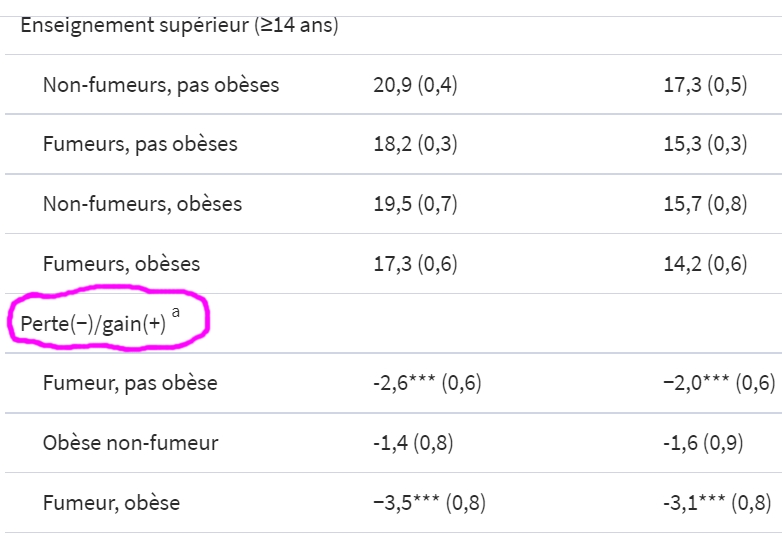Andrew Kingston, The Journals of Gerontology: Series A, Volume 76, Issue 7, July 2021, Pages 1265–1272,
Background
Smoking and obesity are 2 modifiable risk factors for disability. We examine the impact of smoking and obesity on disability-free life expectancy (DFLE) at older ages, using 2 levels of disability.
Method
We used the DYNOPTA dataset, derived by harmonizing and pooling risk factors and disability outcomes from 5 Australian longitudinal aging studies. We defined mobility disability as inability to walk 1 km, and more severe (activities of daily living [ADL]) disability by the inability to dress or bathe. Mortality data for the analytic sample (N = 20 401; 81.2% women) were obtained from Government Records via data linkage. We estimated sex-specific total life expectancy, DFLE, and years spent with disability by Interpolated Markov Chain (IMaCh) software for each combination of smoking (never vs ever), obesity (body mass index ≥30 vs 18.5 to <30), and education (left school age 14 or younger vs age 15 or older).
Results
Compared to those without either risk factor, high educated nonobese smokers at age 65 lived shorter lives (men and women: 2.5 years) and fewer years free of mobility disability (men: 2.1 years; women: 2.0 years), with similar results for ADL disability. Obesity had the largest effect on mobility disability in women; high educated obese nonsmoking women lived 1.3 years less than nonsmoking, not obese women but had 5.1 years fewer free of mobility disability and 3.2 fewer free of ADL disability. Differences between risk factor groups were similar for the low educated.
Conclusions
Our findings suggest eliminating obesity would lead to an absolute reduction of disability, particularly in women.
Combien d'années en bonne santé perdues à cause du tabac et/ou de l'obésité?
Espérance de vie restante totale (colonne du centre), années restantes en bonne santé (à droite) pour les 65 ans.














